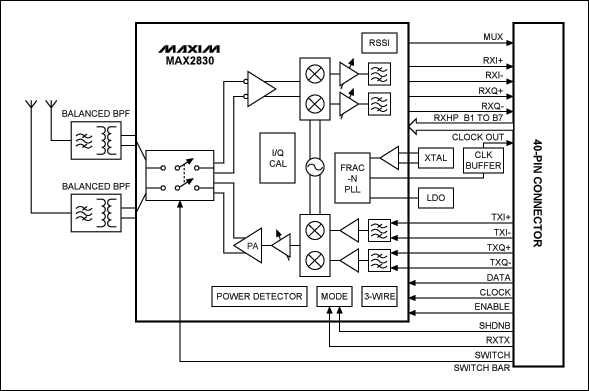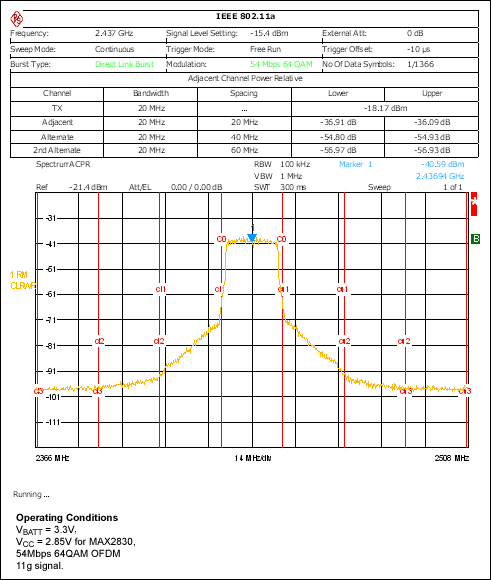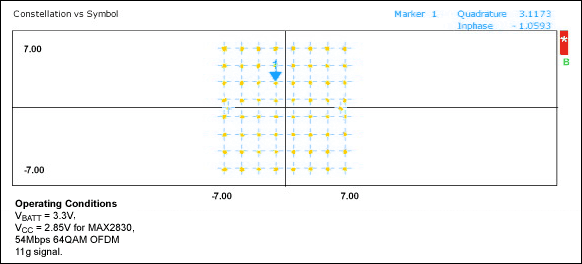
WLAN Reference Design with the MAX2830
Abstract: This reference design is a complete RF front-end soluTIon designed to meet the WLAN IEEE® 802.11b/g standard. Using the MAX2830 RF transceiver, the design is capable of accommodaTIng full range of 802.11g OFDM data rates (6, 9, 12, 18, 24, 36, 48, and 54Mbps) and 802.11b QPSK data rates (1, 2, 5.5, and 11Mbps). This soluTIon offers high performance, small size, and low BOM cost.
Figure 1. The WLAN reference design features the MAX2830 RF transceiver.
- High-Performance Rx NF < 6dB (typ); Tx Output 15dBm (typ)
- Small Size: 17mm x 24.7mm
- Platform Design for MulTIple Form-Factors such as Card Bus and Compact Flash

Figure 2. Block diagram of the WLAN reference design.
Receive SummaryOperating conditions: VCC = 2.85V; TA = +25°C; fRF = 2.437GHz; fBB = 4MHz; Rx VOUT = 112mVRMS; fREF = 40MHz; active-low SHDN = high; RXTX = low; active-low CS = high; SCLK = DIN = low.
Transmit SummaryOperating conditions: VCC = 2.85V; VBAT = 3.3V; TA = +25°C; fRF = 2.437GHz; fREF = 40MHz; active-low SHDN = high; RXTX = high; active-low CS = high; SCLK = DIN = low; 100mVRMS, 54Mbps 802.11g OFDM signal applied to I and Q baseband inputs of transmitter.

Figure 3. ACPR performance at Tx power = 15.7dBm, EVM < 5.6%.

Figure 4. Rx I/Q constellation diagram at RF input = -40dBm, 54Mbps 64QAM, EVM = 2.2%.
Figure 5. Rx I/Q constellation diagram at PIN = -65dBm, 54Mbps 64QAM. The EVM is only 4.2%, which is better than the 9% requirement for sensitivity.
This reference design is suitable for the full range of 802.11g OFDM data rates (6, 9, 12, 18, 24, 36, 48, and 54Mbps) and 802.11b QPSK data rates (1, 2, 5.5, and 11Mbps) at corresponding sensitivity levels. Using the MAX2830 chipset eliminates the need for external SAW filters, a RF switch, and a PA. Only a RF filter, RF balun, and a small number of passive components are required to form a complete 11b/g WLAN RF front-end solution that delivers high performance in a small PCB form-factor.
IEEE is a registered service mark of the Institute of Electrical and Electronics Engineers.
欢迎分享,转载请注明来源:内存溢出

 微信扫一扫
微信扫一扫
 支付宝扫一扫
支付宝扫一扫
评论列表(0条)